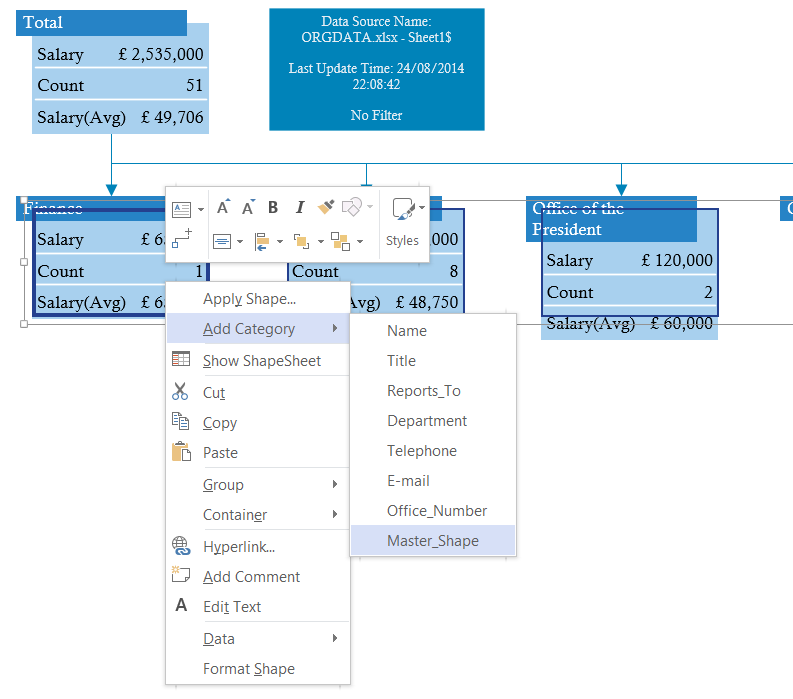
Or, choose Format, Text, click the Font tab, and then specify the options you want. Or, to format all the text in a shape, select the shape.Ĭlick one of the buttons on the Formatting or Format Text toolbar listed in Table 4-3. This tab allows you to alter the scale of your text (size relative to the shape), and the individual letter spacing.įollow these steps to quickly format individual paragraphs, words, or characters:Ĭlick the Text tool on the Standard toolbar, and then select the text you want to format. New Feature The Text dialog box now inclues a fifth tab: Character. If you change the font or size, you might also have to adjust the text block or bump the font size up or down to get the same overall look. Visio’s shapes are designed to accommodate a particular size and style of text. The only drawback to changing text appearance is that you might also have to tweak other settings. But there’s no reason for you to use a shape’s default text formatting if you want to use something else.
#Visio how to change text direction in a shape windows
Most Visio shapes specify black, Arial text because it’s readable and the Microsoft Windows operating system always includes the Arial font. When you want to quickly change the appearance of text in a shape, you can change theįont, size, or style.

Clicking the Format Painter button copies only text formatting-the font, size, color, style, alignment, spacing, and text block background-and applies it to the shape you want. Click the Format Painter button on the Standard toolbar, and then click the shape you want to format.

To do this, select the formatted shape with the Text tool. Quickly copy text formatting If you like the text formatting of a particular shape, you can quickly transfer just the text formatting to another shape with the Format Painter button. For example, the text block itself can have a background color, and you can specify alignment and margin settings that differ from the settings for a paragraph. If you use the Text tool to select a portion of a shape’s text, you can individually format characters, words, or paragraphs.īecause Visio always formats text as part of a shape, you can format more attributes than you might realize if your experience is with word processing programs. If you select a shape and then choose a formatting option, all of the shape’s text is formatted with the option you chose.

Whether you use the toolbar buttons or the commands of the Format menu, the effect of a formatting option depends on how you select the text:

When you apply a style from the Text Style list, Visio applies the text formats specified by the style in much the same way as applying the Heading 1 style in Microsoft Word formats a line of text as a heading. For example, when you choose the Text command, the options are grouped on the dialog box tabs according to the part of text that they affect: Font, Paragraph, Character, Text Block, Tabs, and Bullets.Ĭhoose a style from the Text Style list on the Format Text toolbar The Formatting toolbar also displays a style list, but that list includes fill and line styles as well as text styles. You can also format text using the following methods:Ĭhoose a command on the Format menu Sometimes it’s easier to figure out what an option does when you see it in the context of related options. The Formatting toolbar has the advantage of including the font formatting buttons, but the Format Text toolbar includes shortcuts for changing margins and creating bulleted lists.Īlthough the toolbars provide an obvious way to format the appearance of text, they’re not the only way. To display the Format Text toolbar, choose View, Toolbars, Format Text.įigure 4-18: Both the Formatting and Format Text toolbars contain shortcuts for formatting text. The Formatting toolbar is typically displayed when you start a new Visio diagram. These toolbars provide quick access to many of the options on the tabs of the Text dialog box (Format, Text). With the toolbar buttons, you can quickly change text size, color, font, style, indents, paragraph spacing, and bullets. The quickest way to format text is to click a button on the Formatting and Format Text toolbars, as Figure 4-18 shows.


 0 kommentar(er)
0 kommentar(er)
